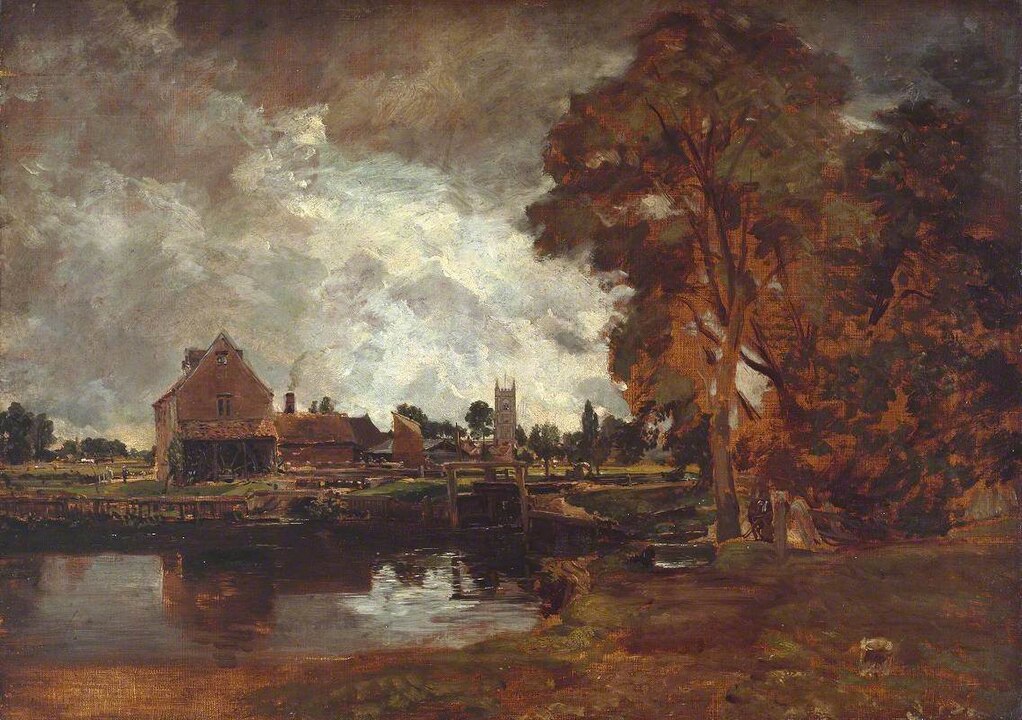
John Constable, born on June 11, 1776, in East Bergholt, Suffolk, England, is one of the most celebrated British landscape painters, whose work has come to define English pastoral art. He was born into a prosperous milling family, a background that deeply influenced his artistic focus on the countryside and rural life. Despite his family’s expectations for him to join the family business, Constable’s passion for art led him to pursue a career in painting, a decision that would eventually revolutionize landscape painting.

Constable’s early artistic education included sporadic studies at the Royal Academy Schools in London, starting in 1799. However, he learned most from nature itself, sketching in the open air and studying the landscapes around him. He believed that painting should capture the truth of nature, a philosophy that set him apart from the more idealized landscape work of his contemporaries. This dedication to capturing the transient effects of light and atmosphere on the landscape became a hallmark of his work.

Throughout the early years of his career, Constable struggled for recognition. His works were often rejected by the Royal Academy, and he sold very few paintings. His financial insecurity was somewhat alleviated by marrying Maria Bicknell in 1816, despite opposition from her grandfather. The landscapes of Suffolk, especially the area around his home known as the Stour Valley or “Constable Country,” provided the subjects for his most famous works, including “The Hay Wain” (1821), which is considered one of his masterpieces. This painting, depicting a rural scene on the River Stour, exemplifies Constable’s innovative approach to landscape painting, characterized by vibrant colors, dynamic compositions, and a meticulous study of light and atmosphere.

Constable’s technique involved creating full-scale preliminary sketches, known as “six-footers,” for his major canvases. This practice allowed him to experiment with and capture the dynamic elements of the scene before committing to the final painting. Despite his dedication to naturalism, Constable’s work was not widely appreciated in England during his lifetime. However, he found success in France, where his art influenced the emerging Barbizon School and the later Impressionist movement. His emphasis on the sensory and emotional aspects of landscape painting, along with his innovative use of broken color and vigorous brushwork, prefigured Impressionism.

Apart from landscapes, Constable also produced family portraits and studies of cloud formations, contributing significantly to the scientific study of the sky in art. His series of cloud studies, meticulously dated and often annotated with weather conditions, underscore his deep interest in meteorology and its effects on the landscape.
Constable was eventually recognized by the British establishment, being elected to the Royal Academy in 1829. Despite this late recognition, his financial and personal life was marked by challenges, including the death of his wife Maria in 1828, which deeply affected him and his work.

John Constable died on March 31, 1837, in Hampstead, London. His legacy is profound, having transformed landscape painting by insisting on the importance of direct observation and the portrayal of the natural world with an unprecedented fidelity to atmospheric effects. Today, Constable is celebrated as a key figure in the Romantic movement, whose works continue to evoke the beauty and dynamism of the English countryside, inspiring generations of artists and art lovers alike. His dedication to capturing the subtleties of light and the complexities of nature has solidified his position as a pioneer of naturalism in art.




